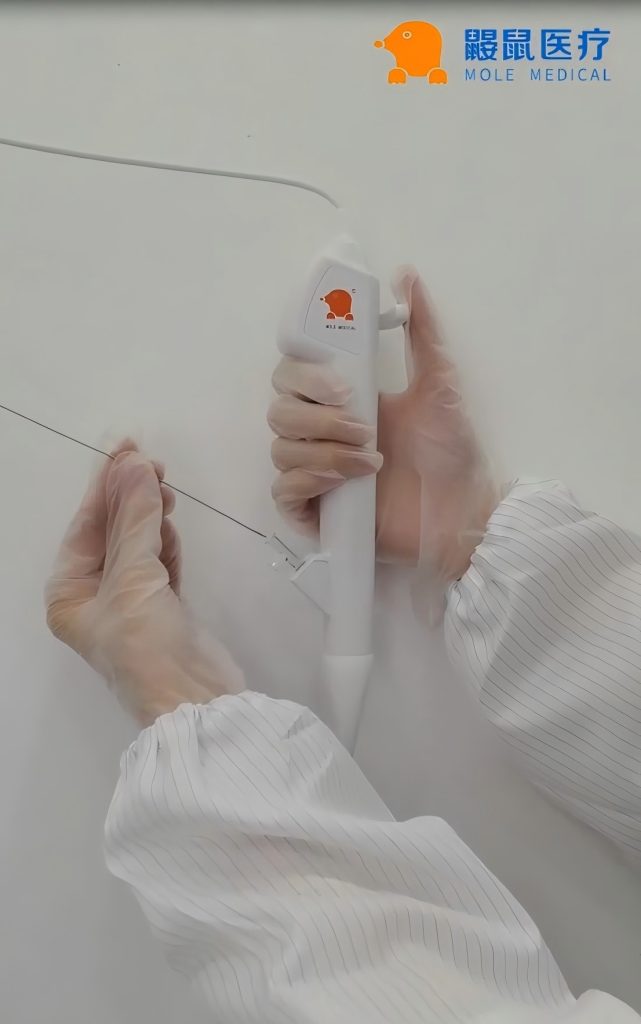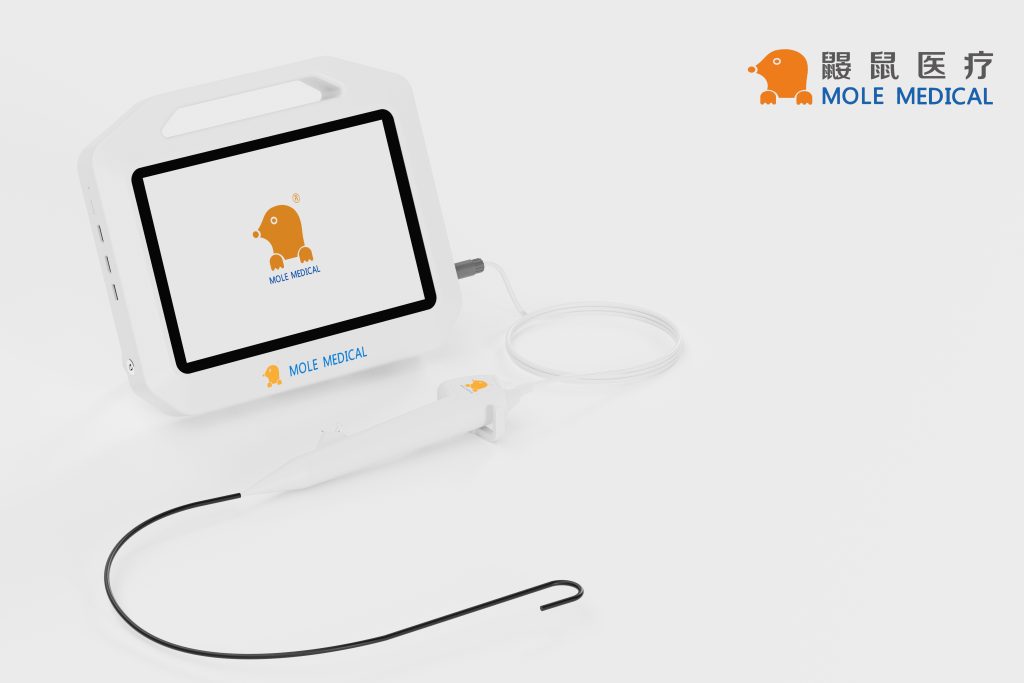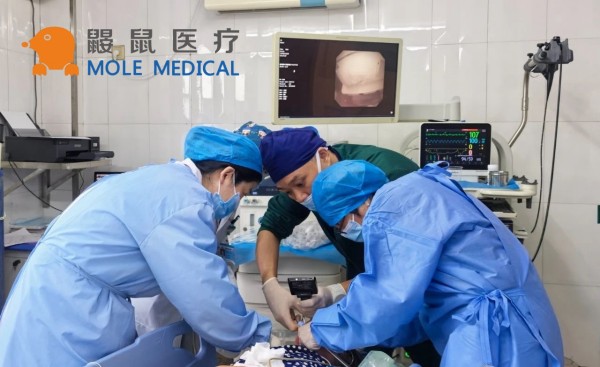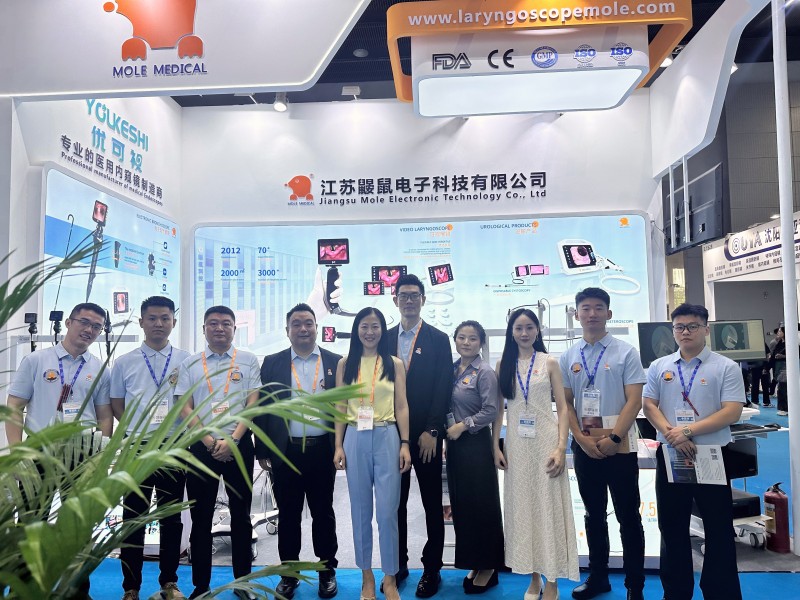Correlation Analysis of the Duration of One-time Flexible Ureteroscopy for Stone Removal with Postoperative Pain and Hospital Stay
Aug 08, 2025
Among the minimally invasive treatment methods for upper urinary tract stones through natural orifices, one-time flexible ureteroscopic lithotripsy (RIRS) has been widely used in clinical practice in recent years due to its avoidance of cross-infection risks and performance degradation associated with repeated use of instruments. This technique involves inserting a thin, flexible endoscope through the body’s natural orifices to reach the renal pelvis and calyces, where laser energy is used to break up the stones. Mole Medical has delved into the key factors influencing postoperative recovery, particularly the impact of the duration of the surgical procedure on postoperative pain and hospital stay, hoping to have significant practical implications for optimizing clinical pathways and enhancing patient experience.
The duration of surgery is an important indicator for measuring the complexity and efficiency of any surgical operation. In RIRS, the operation time usually refers to the period from when the flexible endoscope passes through the urethra, bladder, and ureter to enter the target calyx, until the completion of lithotripsy and the withdrawal of the endoscope. The factors influencing the duration are multifaceted, including the size, number, location, and hardness of the stones, the complexity of the intrarenal anatomical structure, intraoperative bleeding and the clarity of the field of vision, as well as the surgeon’s proficiency. Understanding the relationship between these variables and the operation time is the basis for analyzing its subsequent effects.
Postoperative pain is one of the core concerns for patients and a key indicator affecting the quality of rehabilitation. After RIRS, pain mainly stems from mechanical stimulation of the urothelium during the operation, foreign body irritation from the ureteral stent (double-J stent), dilation of the collecting system, and potential inflammatory responses. Observations and analyses of a large number of clinical cases have shown that there is a certain correlation between prolonged operation time and increased early postoperative pain scores. Possible mechanisms include: prolonged operation increases the range and degree of mechanical damage to the urothelium; continuous fluid irrigation leads to prolonged elevation of intrapelvic pressure; and overly long operation time may increase the risk of ureteral mucosal edema and postoperative infection, all of which may exacerbate postoperative pain perception. Therefore, reasonable control of operation time is considered an important aspect in reducing postoperative discomfort.

Length of hospital stay is an important parameter reflecting the efficiency of medical resource utilization and the recovery speed of patients. In the field of RIRS, the promotion of day surgery or short hospitalization models has become a trend. Medical research by Mole Medical has found that a significant increase in operation time is often associated with an extended hospital stay for patients. This is mainly because: overly long procedures may lead to a more severe tissue trauma response, requiring a longer postoperative observation and management period; it increases the potential risk of postoperative complications such as fever or infection, necessitating more rigorous monitoring or additional treatment; at the same time, the demand for postoperative pain management may also increase accordingly. Optimizing surgical efficiency and shortening operation time while ensuring safe stone fragmentation plays a positive role in achieving rapid recovery and reducing the hospitalization period.
In the technical support for enhancing the efficiency and ensuring the safety of RIRS surgery, high-performance disposable flexible ureteroscopes play a crucial role. The disposable flexible ureteroscope developed by Mole Medical is designed with a focus on clinical practical needs. The scope body has excellent passability and flexible steering ability, which helps surgeons reach the target calyx more smoothly and reduces the ineffective operation time caused by difficult manipulation of the scope. Its high-definition optical imaging system provides a clear surgical field of view, assisting surgeons in more accurately identifying the location of stones and tissue structures, and improving the efficiency of stone fragmentation. The reliable instrument channel design ensures the smooth entry and exit and stable operation of auxiliary instruments such as laser fibers. These features collectively provide technical support for surgeons to efficiently and safely complete stone fragmentation operations in complex situations.

In summary, in one-time flexible ureteroscopy lithotripsy, the duration of the operation is a controllable factor closely related to the postoperative recovery experience of patients. Clinical evidence supports the association between prolonged operation time and increased postoperative pain and extended hospital stay. Therefore, in clinical practice, attention should be paid to the control of surgical efficiency. This not only depends on the continuous accumulation of experience and proficient technical operation of the surgeon, but also relies on reliable and convenient surgical instruments. The selection of high-quality one-time flexible ureteroscopes provided by Mole Medical, with their excellent maneuverability and clear imaging, helps to improve surgical efficiency, providing strong technical support for reducing operation time, improving postoperative pain management, shortening hospital stay, and ultimately enhancing overall treatment outcomes and patient satisfaction. In the future, more in-depth prospective studies will further quantify this association and provide more precise guidance for clinical practice.
Categories
Latest Articles

Disposable Nephroscopes: Redefining Safety & Efficiency in Urology
Introduction The shift towards minimally invasive urological surgery has found a pivotal ally: the disposable nephroscope. As traditional reusable scopes grapple with persistent biofilm contamination risks and soaring sterilization costs, the global medical community is rapidly adopting single-use solutions. This article analyzes the clinical value, technological evolution, and dynamic innovation landscape driving this transformative shift. ... Read more

Disposable Video Laryngoscope Blades: The Ultimate Solution for Preventing Cross-Contamination
In the operating room, as the cold light of a video laryngoscope illuminates a patient’s airway, an age-old medical challenge is being redefined: How can life-saving instruments avoid becoming vectors of infection? Jiangsu MoleMedical drives an innovative safety revolution—replacing reusable devices with single-use, sterile laryngoscope blades that create a pure barrier for critical airways. Traditional video ... Read more
-2.jpg)
FDA & CE Approved Video Laryngoscope: What Makes It Stand Out?
Introduction In high-pressure emergencies and precision-driven operating rooms, video laryngoscopy is revolutionizing airway management. Mole Medical’s FDA and CE-certified technology replaces tactile-dependent “blind intubation” with real-time visual navigation – enhancing safety, accuracy, and clinical outcomes worldwide. Why Certification Matters Mole Medical’s dual certifications validate its global compliance and performance: FDA Clearance: Rigorous validation of safety/efficacy ... Read more

Mole Medical Showcases Advanced Endoscopy Solutions at CMEF Autumn 2025, Driving Global Partnerships
Guangzhou, China – September 26-29, 2025 – The 92nd China International Medical Equipment Fair (CMEF Autumn) concluded successfully on September 29th at the Canton Fair Complex in Guangzhou. Mole Medical Technology Co., Ltd. (Mole Medical) made a significant impact at the event, drawing global medical professionals and partners to its booth (Hall 2.1, Stand Q24) ... Read more

How to Use Disposable Ureteroscopes Safely and Efficiently
In the field of urology, the application of disposable electronic ureteral-kidney pelvis endoscopy catheters is leading the technological innovation in minimally invasive surgeries. According to the 2024 multi-center research data from China’s urology department, among the over 5,000 surgeries included, the patient group using disposable catheters performed significantly better in key indicators such as operation ... Read more



